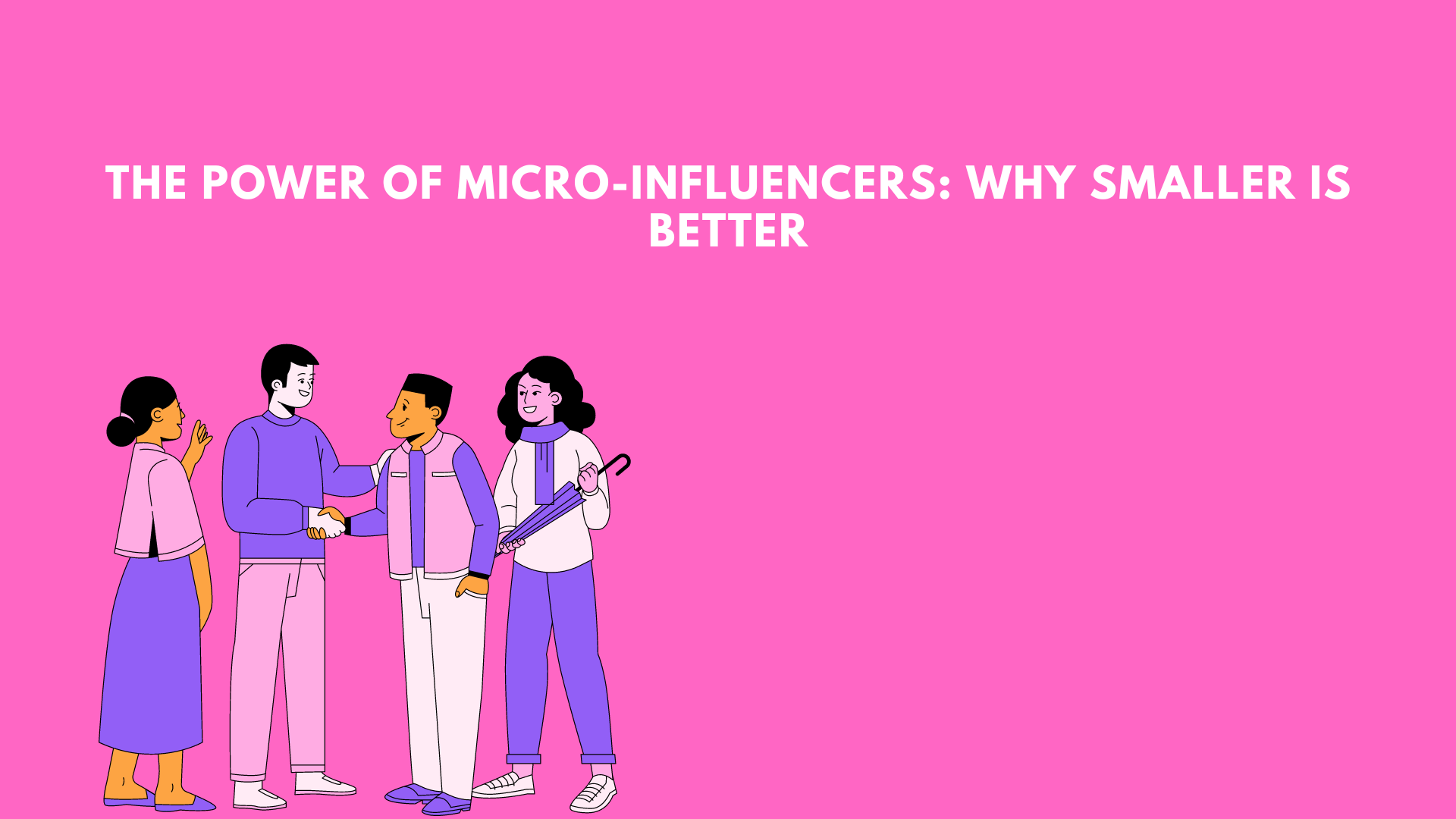In the world of influencer marketing, bigger isn’t always better. While partnering with celebrities and mega-influencers can give brands extensive reach, micro-influencers—those with smaller but highly engaged followings—are increasingly becoming the go-to choice for businesses looking to build authentic connections with their audiences. But why are micro-influencers so powerful? Here’s a look at why smaller is often better when it comes to influencer marketing.
1. Higher Engagement Rates
One of the most compelling reasons to work with micro-influencers is their ability to generate higher engagement rates compared to their larger counterparts. Micro-influencers typically have between 1,000 and 100,000 followers, and they often boast a more engaged audience. This is because their followers feel a closer connection to them, viewing them more as peers than celebrities.
These closer relationships translate into more likes, comments, shares, and overall interaction with the content they post. In fact, studies have shown that as an influencer’s follower count increases, their engagement rate tends to decrease. By working with micro-influencers, brands can tap into this high level of engagement, ensuring that their message resonates more deeply with the audience.
2. Authenticity and Trust
Micro-influencers are often perceived as more relatable and trustworthy than larger influencers or celebrities. They are typically seen as experts or enthusiasts in their niche, whether it’s fashion, fitness, beauty, or tech. Because they are passionate about their interests, their endorsements tend to be more genuine.
This authenticity is crucial in today’s marketing landscape, where consumers are increasingly wary of overly polished and obviously sponsored content. When a micro-influencer promotes a product, it feels like a recommendation from a friend rather than a paid advertisement. This trust can significantly impact purchasing decisions, making micro-influencers particularly effective at driving conversions.
3. Niche Targeting
Micro-influencers often operate within specific niches, whether it’s vegan cooking, sustainable fashion, or DIY home improvement. This specialization allows brands to target very specific audiences with tailored messaging. For example, a skincare brand that focuses on natural ingredients might collaborate with micro-influencers who are passionate about clean beauty, reaching an audience that is already interested in and values these attributes.
This level of targeting can lead to more effective campaigns, as the content aligns perfectly with the interests and values of the audience. Rather than casting a wide net, brands can reach a concentrated group of potential customers who are more likely to be interested in their products or services.
4. Cost-Effectiveness
Working with micro-influencers is generally more cost-effective than partnering with mega-influencers or celebrities. While top-tier influencers can charge thousands of dollars per post, micro-influencers often work for a fraction of that cost, or even in exchange for free products or services.
This affordability allows brands, especially smaller ones, to launch multiple campaigns with several micro-influencers, increasing their reach and impact without breaking the bank. Additionally, because micro-influencers often have higher engagement rates, brands can achieve a better return on investment (ROI) even with a smaller budget.
5. Building Long-Term Relationships
Micro-influencers are often more open to building long-term partnerships with brands, rather than just one-off collaborations. These ongoing relationships can lead to more consistent and sustained brand exposure, which is valuable for building brand loyalty over time.
Long-term partnerships also allow the influencer to become more familiar with the brand and its products, leading to more authentic and insightful content. As the influencer continues to share their positive experiences with the brand, their audience becomes more familiar with and trusting of the brand, further enhancing the campaign’s effectiveness.
6. Creative and Relatable Content
Because micro-influencers are often content creators at heart, they tend to produce creative and relatable content that resonates with their audience. Unlike traditional advertisements, which can feel forced and out of touch, the content created by micro-influencers is often more organic and tailored to the platform it’s shared on.
This type of content is more likely to be shared, saved, and engaged with, extending its reach beyond the influencer’s immediate followers. For brands, this means their message is not only reaching the right people but also being presented in a way that feels natural and appealing.
7. Greater Flexibility and Collaboration
Working with micro-influencers can offer brands greater flexibility and collaboration opportunities. Micro-influencers are often more willing to work closely with brands to create content that aligns with both the influencer’s style and the brand’s messaging. This collaborative approach can lead to more innovative and impactful campaigns.
Additionally, micro-influencers are generally more adaptable to different campaign needs, whether it’s creating multiple pieces of content, participating in events, or engaging in live streams. This flexibility can be especially beneficial for brands looking to experiment with different types of content and platforms.
8. Humanizing the Brand
Micro-influencers can help humanize a brand by putting a relatable face to it. They often share personal stories, experiences, and insights, making the brand feel more accessible and trustworthy to their followers. This personal touch can be particularly effective in industries where trust and connection are paramount, such as health and wellness, food, and parenting.
By aligning with micro-influencers who genuinely love and use their products, brands can build stronger emotional connections with consumers, which can lead to increased brand loyalty and advocacy.
Conclusion
The power of micro-influencers lies in their ability to create authentic, engaging, and relatable content that resonates with niche audiences. While they may not have the massive reach of mega-influencers, their influence is often more impactful due to the trust and connection they have with their followers.
For brands looking to build meaningful relationships with consumers and achieve high ROI, micro-influencers offer an effective and cost-efficient solution. By leveraging the strengths of micro-influencers, brands can drive growth, build trust, and create lasting connections with their target audience in an increasingly crowded digital landscape.
4o









